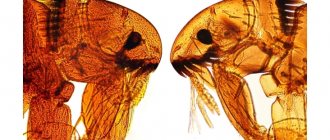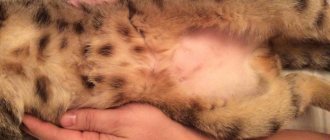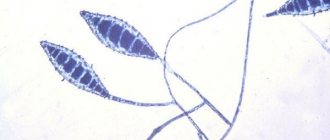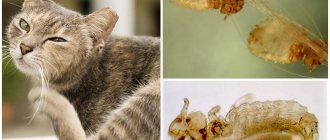Why are cat bites and scratches dangerous?
Often bites and scratches from pets go away without serious consequences. But unfortunately, it happens differently. Any injuries to the skin can lead to serious health consequences, such as:
- suppuration;
- blood poisoning;
- deadly diseases such as tetanus.
Bites and scratches are familiar to all cat owners.
There are symptoms to look out for if you have recently been scratched or bitten by a cat:
- temperature;
- swelling of the hand or other injured area;
- bleeding from the wound does not stop;
- the wound hurts a lot;
- the bite site or scratch began to fester.
If such manifestations occur, you should immediately seek medical help.
Often people delay going to the doctor, hoping that the symptoms will disappear on their own. But you can’t hesitate, since spontaneous recovery is extremely rare, and usually without medical help a person only gets worse.
Why are scratches from a cat dangerous?
Animals need claws not only for hunting and self-defense, but also for free movement through trees. They have a curved hook-shaped design that provides maximum grip on the surface. The peculiarity of the shape contributes to the accumulation of dirt, pathogenic microorganisms and particles of prey under the claws.
When a scratch is applied, an open wound with capillary bleeding is formed. Pathogenic microorganisms penetrate the general bloodstream and, with pathologically low immunity, can provoke the development of serious diseases.
Cat scratches can be very dangerous
The most dangerous disease that can be contracted from furry pets is felinosis. The disease is caused by chlamydia that enters through a small scratch on the skin. There is a long latent period, as well as debut in an acute form with damage to regional lymph nodes. If left untreated, it can cause advanced forms of lymphadenitis, as well as many other complications. Most often, children get sick because their immune system is not able to cope with chlamydia on its own.
What not to do
If you are scratched or bitten by a cat, it is quite possible to provide yourself with the necessary first aid yourself. But you should not overdo it, as some actions can only aggravate the condition. To ensure healing goes quickly and without consequences, remember that :
- There is no need to stop the bleeding quickly. With the first drops of blood, an infection can potentially come out and inflammation can be avoided.
- There is no need to apply a tight bandage, and you should not cover the wound site with dressing material. This increases the likelihood of inflammation and suppuration.
- There is no need to remove swelling on your own. Swelling of the tissue indicates a high likelihood of infection developing in the area where the cat scratched you. Delaying seeking medical help may result in the need for serious medical intervention.
Recommendations from experts
What should you not do if you are bitten by a domestic cat?
Some people, frightened by the possible consequences of a bite from their pet, go to great lengths and do everything they can and cannot do in order to prevent the development of diseases.
However, experts do not recommend resorting to the following actions in this case:
- If there is slight bleeding, it is not advisable to stop it. In such a situation, the risk of “delay” of pathogenic microorganisms in tissues will only increase;
- If a very tight bandage is applied, blood circulation may be impaired. Because of this, phagocytes will not be able to “arrive” in time to the site of damage to destroy the pathogenic flora;
- It is not advisable to self-medicate, especially if the limb is already swollen after the bite. Also, do not put off visiting a doctor if you are bitten by an unfamiliar cat on the street, which may not be vaccinated.
First aid
In any case, if a cat bites or scratches, you need to immediately treat the wound. This will reduce the risk of complications.
- Wash the area of the bite or scratch with soap and water, preferably household soap. It will sting, but the cat’s saliva and possible bacteria will be washed away.
- Treat the wound with 3% hydrogen peroxide or 0.05% chlorhexidine solution.
- Disinfect the edges of the wound with iodine, brilliant green or alcohol. Try not to get into the wound itself, otherwise a burn may occur.
- Apply a gauze bandage to the treated area.
After some time, when the bleeding has completely stopped and the wound has dried, you can apply a bandage with antibacterial ointment. This will allow healing to occur faster and reduce the risk of re-injury to the wound. The following are considered effective:
- Miramistin. Prevents inflammation and wound suppuration.
- Rescuer. The balm relieves pain and accelerates scarring of the wound.
- Solcoseryl. It heals scratches well and prevents the formation of scars, but it can only be applied to a dried wound. If there are signs of inflammation and suppuration, do not use.
- Levomekol. Typically used when pus forms. If the injury occurred far from the city, where there is no opportunity to get medical help, and suppuration has begun, you can use this ointment.
Important! All medications must be used strictly according to the instructions, taking into account age, contraindications and other points. Find out also - How to rid a kitten of the habit of biting and scratching its owners.
How to give first aid
If the damage after a cat bite is not too significant, it is possible to sanitize the damaged area yourself. Before contacting a doctor, you should first treat the wound.
- Rinse the bitten area thoroughly with water at room temperature and laundry soap. The foam will help wash away the animal's saliva from the surface of the skin, including harmful microorganisms, reducing the risk of contracting tetanus or rabies.
- Treat the wound surface with a 3% solution of hydrogen peroxide or other antiseptic.
- If the bleeding is intense, it is stopped using a sterile pressure bandage. Typically, small cat teeth can only cause capillary bleeding. It happens that a small superficial vein is damaged. In this situation, advantages are discovered - the venous blood flowing from the wound helps to cleanse the cat's saliva and pathogens. Bleeding can also be stopped using a pressure bandage.
- It is necessary to stop the bleeding if it does not go away on its own after 15 minutes.
- The skin around the injury is treated with an alcohol solution of iodine or brilliant green.
- An application of antibacterial ointment is made to the sore spot.
- Cover the wounded area with a sterile napkin from above, protecting it from dirt.
Manifestation of disease in humans
The incubation period, that is, the period from the penetration of the pathogen into the body until the appearance of the first clinical signs, can last several weeks. In this case, the scratch seems to have healed, but again makes itself felt by the inflammatory process:
- suppuration;
- bloating;
- the presence of a bubble filled with cloudy liquid.
The mechanism of disease development is as follows:
- from the site of injury, the rod penetrates the lymphatic system;
- from there, through the blood and lymph flow, it enters the nearby lymph node;
- this in turn becomes inflamed and increases in size, leading to a painful reaction.
In addition to enlarged and painful lymph nodes, the patient feels exhausted, suffers from headaches, and the temperature may rise. The most interesting thing is that the symptoms go away as unexpectedly as they began: at one point the person feels absolutely healthy.
In very rare cases, the disease takes on a generalized character, when almost all lymph nodes are affected: they are several times enlarged, painful and inflamed, in some cases purulent inflammation occurs.
In addition, damage to the liver and spleen, the nervous system is possible (signs of inflammation of the brain, radiculitis, etc. appear).
In cases where the stick gets into a person’s eye, for example, with a cat’s saliva, unilateral conjunctivitis develops:
- mucous membrane is red and swollen;
- small bubbles are visible on the cornea;
- the regional lymph node located in the ear area reaches enormous sizes;
- the lymph node becomes suppurated and bursts, forming fistulas on the skin.
Local clinical manifestations
Cat scratches appear as minor damage to the upper layers of the epidermis, which is accompanied by a small amount of blood. In the absence of proper treatment and pathogenic microorganisms entering the bloodstream, symptoms such as:
- swelling of the wound surface;
- suppuration;
- weeping and lack of wound healing;
- painful sensations.
In case of infection with felinosis, the following clinical picture is noted:
- The incubation period lasts 7-14 days, depending on the maturity of the immune system. It is characterized by the appearance of a purulent papule near the source of damage to the skin. Over time, the papule opens on its own, and the purulent contents pour out. An ulcer forms that tends to ooze.
- The acute form of the disease is accompanied by fever and signs of general intoxication. The constantly increasing concentration of chlamydia affects the functioning of the entire lymphatic system, affecting the lymph nodes, spleen, and liver. The febrile period lasts long enough, after which imaginary relief occurs.
- Latent form - inflamed lymph nodes provoke pain on palpation. A biopsy involves obtaining a purulent-serous biopsy.
Important: List of healing ointments for cuts
What do cat scratches look like?
Without proper treatment, the disease can accompany a person for years and occur in a latent form, periodically exacerbating.
When do you need a doctor?
As already mentioned, in some cases you will have to consult a doctor. The already mentioned symptoms will be a signal to seek medical help:
- swelling at the site of the bite or scratch;
- swelling of the hand or other bitten limb;
- bleeding that does not stop or renews;
- elevated temperature;
- numbness of the injured area;
- wound suppuration;
- loss of consciousness.
In general, temperature can be a signal from the body to fight bacteria. However, if it is accompanied by swelling, this is always a bad sign. A tumor is a signal that the body cannot cope with an infection (and this could be, for example, dangerous tetanus or pasteurellosis), and it requires help, the type of which only a physician can determine. You cannot self-medicate.
A hand swollen after a cat bite is an alarming symptom
In addition, you cannot avoid going to the doctor if the mobility of the bitten limb is difficult. It is extremely rare, but there are cases when an animal damages tendons with its teeth. In this case, only a surgeon can help.
To get urgent help after a cat bite, if it is impossible to get a number to the local surgeon or it is night outside, you should contact the trauma center.
Even when there are no negative symptoms, you should go to the doctor if the cat that bit or scratched was a stray. In this case, you need to seek help immediately after carrying out primary medical measures. Street animals are always a breeding ground for all kinds of infections, so you will need a rabies vaccination and, possibly, other medical measures at the discretion of the doctor. In principle, pets can also get rabies if they come into contact with other animals, walk on the street, or go to the countryside. You should especially sound the alarm if your cat is drooling or foaming at the mouth (a symptom of rabies) or has bitten for no reason.
A rabid cat cannot be cured, so the pet needs to be vaccinated in advance
The author of the article had a sad experience of hand swelling after being bitten by a domestic cat. Self-medication did not bring results, and on the fourth day I had to go to the emergency room. The doctor treated the wound, gave me an anti-tetanus injection, prescribed antibiotics and gave me a referral for a rabies vaccination. However, at the City Anti-Rabies Center, where vaccination is carried out, the author was reassured: since the cat was born and raised at home, without contact with other animals and without being on the street, there is no danger. In all other cases, vaccination would have to be done.
Video: Doctor talks about pet bites
Why do wounds take a long time to heal?
Lacerated wounds heal much harder than smooth ones. That is why a crust forms on the surface for a long time, which is periodically moistened. Insufficient treatment of a wound immediately after it appears only blocks healing, as bacteria and microbes accumulate in the scratch. The shape of the scratch makes it difficult to treat.
© shutterstock
Treatment
As already mentioned, only a physician can choose the correct treatment. A person can only provide first aid to himself.
Drug therapy
In addition to the necessary vaccinations (against rabies and tetanus), the doctor may prescribe antibiotics:
- antibiotics of the penicillin group;
- doxycycline;
- ceftriaxone;
- fluoroquinol.
Other options are possible; the prescription of antibiotics and their dosage is entirely within the competence of the doctor and depends not only on the symptoms, but also on the age of the patient, his contraindications, and concomitant diseases . Pregnant and lactating women are especially careful when prescribing medications. Only Ceftriaxone is considered relatively safe for them (excluding the first trimester of pregnancy).
Also, for local treatment of suppuration and inflammation, the doctor may prescribe an antimicrobial ointment such as Levomekol. In case of a large accumulation of pus, it may be necessary to clean the wound, and if blood vessels or tendons have been damaged, they may need to be sutured.
Levomekol is prescribed if the wound is infected and begins to fester
Folk recipes
Traditional recipes cannot replace medications, much less vaccinations. However, if the bite occurred far from civilization, in a remote village, where there is no way to seek help, it is worth trying to maintain health in at least this way. You can also use traditional methods in addition to the main treatment, but you must first consult with your doctor.
- Dried yarrow herb is a folk antibacterial remedy, including one that affects certain types of staphylococci and streptococci. You can take it orally as an infusion (2 tablespoons per glass for an adult) or make compresses on inflamed areas.
- To relieve swelling, you can make lotions with infusions of chamomile and calendula.
- To treat the wound, you can use tincture of calendula or chlorophyllipt.
- Crushed leaves of meadowsweet (meadowsweet) can be applied to the wound, which reduces inflammation.
- You can apply a compress of plantain leaves to the bitten area (first douse them with boiling water); in winter, you can use dried leaves, after steaming them with a small amount of hot water and cooling them.
- Cut aloe leaves are a traditional anti-inflammatory remedy and can be applied to the wound.
To speed up the healing of wounds and scratches, you can lubricate them with aloe juice or apply cut leaves.
Treatment and treatment
The first thing to do when a cat scratches you is to disinfect the wound. For these purposes, hydrogen peroxide or chlorhexidine is used. A small amount of disinfectant is applied to the wound, after which the remaining liquid in it is removed using blotting movements.
If bleeding occurs, take a piece of bandage or gauze, soak it generously in antiseptic, then apply it to the wound surface and press. After a few minutes the bleeding stops.
To heal the wound as quickly as possible, special ointments and creams . The most effective of them are:
- Levomekol - disinfects and promotes rapid regeneration of damaged areas of the epithelium. Can be applied openly or under a bandage at night.
- Bepanten - has a thick, oily consistency that does not allow the ointment to spread under the influence of body temperature. Contains provitamins that promote rapid wound healing.
- Actovegin - contains microelements that help saturate the cells of the wound surface with nutrients, which helps accelerate metabolic processes, as well as active wound healing.
Actovegin is used to heal cat scratches.
Treatment of the wound, even if it is minor, is performed at least 2 times a day. Before each application of the ointment, it is necessary to disinfect the wound with an antiseptic and allow it to air dry.
If crusts appear, under no circumstances should they be removed, scratched or removed using improvised means. Under the crusts, a regeneration process is actively underway, which promotes the formation of new epithelial cells.
If pus appears in the wound , which is actively secreted out or is located at the bottom of the wound, the use of antibiotics . In this case, it is better to seek help from a doctor who will select the most suitable remedy. It is better not to use wound healing agents, since pus may end up under the surface of the newly formed cells, which will provoke the development of an extensive inflammatory process.
Important: Treating a wound with hydrogen peroxide: features of the procedure and effectiveness
If we are talking about the treatment of a specific disease (felinosis) caused by infection of a wound with chlamydia, treatment is carried out in a hospital setting. There have been no recorded cases of transmission of the disease from person to person, but the patient must be constantly under the supervision of specialists. Appropriate antibiotic therapy is selected, and drugs to enhance immunity and symptomatic treatment are also prescribed.
Folk remedies
Old, time-tested traditional medicine recipes can help treat a cat bite at home. Prepared on the basis of natural antiseptics, they are effective only for the purpose of improving the patient’s well-being due to their antimicrobial, anti-inflammatory and wound-healing effects. Unfortunately, such drugs are not able to cope with diseases such as rabies and tetanus.
Alcohol tincture of calendula is excellent for treating wounds. Chlorophyllipt tincture can combat a large number of staphylococcal bacteria that enter the wound along with the animal’s saliva.
Compresses and baths using infusions of calendula or chamomile flowers will help eliminate swelling. Meadowsweet has the same healing and antiseptic properties. The leaves of the plant, crushed into a paste, are applied to the wound and secured with a light bandage.
There are many known recipes for preparing products intended for internal use:
- Infusion of immortelle. In the evening, brew dried flowers (a tablespoon of raw material per glass of boiling water), leave until the morning. Strain and take one spoon three times a day. Effectively relieves inflammatory processes and accelerates healing.
- A mixture of crushed walnuts, honey, onions and table salt. You need to take nuts and honey in 2 parts, onion and salt – one at a time and mix thoroughly. Use the resulting product one spoon 3 times a day, store in the refrigerator.
- Snake mountaineer. A tincture is prepared from the rhizomes of this plant. The crushed raw materials (20g) are poured with dry wine (1 l) and left for 8 hours, shaking occasionally. Take in small portions several times a day.
Do not forget that treatment of a cat bite with traditional medicine is only additional. If the victim’s condition worsens at the slightest level, it is necessary to contact a medical facility.
Risk factors
If you are bitten by a cat and after some time your finger swells, be sure to see a specialist. Many people are deterred by the fact that the pet is domestic and vaccinated, but the affected areas of the skin can become infected not with the animal’s saliva, but from the outside.
In addition, the risk of infection increases significantly if you have the following diseases:
- disturbances in liver function;
- diabetes;
- peripheral arterial disease;
- endocrine diseases.
If you consult a doctor later than 12-15 hours after injury, complications are likely to occur.
Possible consequences of bites and scratches
As a result of damage to soft tissues by a cat, infection with the following infections is possible:
- Rabies. The most terrible disease that can be contracted as a result of an animal bite. Usually the incubation period is from 2 to 12 weeks, but sometimes the first symptoms can appear after 5-10 days. Symptoms: headaches and muscle pain, pain in the bitten area, even if it has already healed, fever, fatigue. Then aggression, convulsions, delirium, fear of light and fear of water are added. In the last stage, paralysis occurs. The disease is fatal and has no cure once symptoms appear. The only way to avoid rabies and save your life if bitten by an infected animal is to get vaccinated on time. The standard period is three days from the moment of the bite.
- Tetanus. The second most dangerous disease, which is rare, but can be acquired by a bite or scratch. The incubation period lasts from several days to a month. One of the first symptoms is usually pain at the wound site, even if it has already healed. Other manifestations of the disease: cramps of the masticatory and facial muscles, swallowing disorders, hardness and tension of the neck muscles. In the future, such convulsions spread to the entire musculature, and breathing and heart rhythm disturbances occur. Coma and death are possible. The disease is treated in the intensive care unit.
A cat's claws and mouth contain a wide variety of microbes.
- Pasteurellosis. A cat can infect this disease without biting, but simply by licking damaged skin. Symptoms appear within 2–12 hours: swelling, redness and tenderness of the bite site, as well as diarrhea. In some cases, pasteurellosis pathogens cause pneumonia or lung abscess, eye infections, meningitis, and sepsis. Treated with antibiotics, the prognosis is favorable if treatment is started in a timely manner.
- Streptococcal infection. Most often, it is streptococci that get into wounds from cat bites. Symptoms appear after a day or more, and include swelling, pain and redness of the bitten area, as well as various chronic inflammations. Treat with antibiotics.
- Staphylococcal infection. Manifestations of staphylococcus infection also occur a day or more after the bite. Redness, swelling, suppuration of the wound, and fever may appear; complications include pneumonia and sepsis. Treated with antibiotics.
- Sporotrichosis. A fungal disease that is quite rare. An infected wound does not heal and the lymph nodes may become swollen. Treated with antifungal drugs.
It is almost impossible to become infected with HIV through a cat bite, since it lives outside the human body for only 8 seconds. For a hypothetical infection to occur, a cat must bite an infected person until the blood bleeds, and then immediately bite a healthy person, also damaging his blood vessels.
There is a disease called cat scratch disease (CSD). Its scientific name is felinosis. Children, elderly people and people with weakened immune systems are most susceptible to the disease. You can become infected through scratches and bites, or through a cat licking damaged skin. The incubation period is from two weeks to three months. Typical symptoms: edema, swelling at the site of the scratch, its suppuration, as well as fever, weakness, and a general painful and broken state. The disease is always accompanied by enlarged lymph nodes; sometimes individual nodes can suppurate. There is an atypical form, characterized by eye damage. Very rarely, felinosis can develop complications: polyneuritis, meningitis, encephalopathy, damage to internal organs. Usually the disease ends in self-healing with the emergence of immunity. In any case, if symptoms occur, you should consult a doctor, since deadly diseases can have similar manifestations.
A typical symptom of felinosis is swollen or suppurated lymph nodes
The listed diseases, in addition to rabies, can also be carried by domestic cats. Since they are carriers, animals often have no symptoms. And they can become carriers of infection after being bitten by fleas, which are able to jump into the apartment even from the landing, or even in childhood, from their mother cat.
If any illness occurs, always tell your healthcare provider about any recent cat bites or scratches. They may be related.
Video: in the Kama region, a teenager died after being bitten by a cat
Medical care for a cat bite
The medical facility produces:
- interviewing the person who was bitten to collect information about himself, the bitten animal and the circumstances of the attack;
- qualified inspection of the damage caused, assessing: their localization;
- depth;
- involvement of underlying tissues, vessels, nerves;
- presence of signs of wound infection;
- opening and treating purulent lesions with antiseptics;
- traumatologist - in case of hand injury;
- fever;
Immunization after cat bites
When providing medical care to persons bitten by animals, indications for immunoprophylaxis of rabies and tetanus infection are determined.
Rabies
Rabies is absolutely fatal to humans. If symptoms of the disease appear, the death of the infected person is inevitable.
An infection spread by the rabies virus is characterized by severe damage to the central nervous system, which can be fatal.
When analyzing cases of deaths from rabies, it is revealed that:
- 75% of individuals voluntarily refused immunization;
- in 12.5% of cases, the reason was the independent interruption of the series of vaccinations and failure to comply with the prescribed restrictions associated with them;
- in other cases, the cause of the development of infection was an incorrect assessment of the circumstances and incorrect determination of the indications for immunization.
The risk of infection is considered insignificant, and the vaccine is not administered if the bitten cat has been vaccinated against rabies within a year (but not later) and does not have its clinical manifestations. Even if the animal is vaccinated, it is monitored for 10 days; and if symptoms of rabies appear, the bitten person should immediately begin immunoprophylaxis.
The most dangerous localization of bites is considered to be:
- facial area;
- neck area;
- areas of the hand and fingers;
- several places (multiple bites).
In these cases, a shortened course of 3 vaccinations is carried out (while monitoring the cat), since in some cases even vaccinated animals can become a source of rabies infection, for example, if the vaccination rules are neglected or the antigenic properties of the vaccine are reduced. If the cat remains healthy during the 10-day observation period, the vaccination course is stopped.
There are no contraindications to immunoprophylaxis of rabies in case of animal bites, given its absolute lethality. Vaccination against rabies is carried out by a doctor at the anti-rabies care center (Order of the Ministry of Health No. 297 of October 7, 1997).
The vaccine is administered in a dose of 1 ml as an intramuscular injection on the day of treatment (day 0); as well as on the 3, 7, 14 and 30 days from the start of the course. Some patients receive additional immunization at day 90. The vaccine is administered:
- for adults and adolescents in the deltoid muscle of the shoulder;
The rabies vaccine is administered to adults and adolescents in the shoulder.
- for children - on the outer surface of the thigh.
The modern rabies vaccine is well tolerated; in 0.02–0.03%, mild allergic reactions, mainly rash, are observed.
After vaccination against rabies, for its effectiveness, it is vital to comply with restrictive measures during the course of vaccinations, as well as 6 months after its completion. Strictly contraindicated:
- drinking alcohol;
- overstrain and overwork;
- exposure to high temperatures leading to overheating (prolonged insolation, visiting a sauna);
- exposure to low temperatures leading to general hypothermia.
The effectiveness of the vaccine is 96–98%, but if its administration is started no later than two weeks from a cat bite. Antibodies to the virus appear 14 days after immunization and form intense immunity by 30–40 days. Post-vaccination immunity lasts for 1 year. In persons with immunodeficiencies, as well as those receiving immunosuppressive therapy, the titer of rabies antibodies must be monitored.
In cases where rapid development of infection is expected, the administration of the vaccine is combined with the administration of rabies immunoglobulin - ready-made antibodies:
- the dangerous injury locations described above;
- when there are several bites;
- in cases of deep bites in which vessel injury and bleeding occurred.
Anti-rabies immunoglobulin is administered within the first 3 days after injury, preferably in the first 24 hours, with half of its dose used by irrigating the wound or trimming its edges.
When raising a kitten, you should teach it not to bite.
Video: symptoms of rabies in humans
Tetanus
If a cat is bitten, emergency prevention of tetanus infection is relevant; it must be carried out within the first 20 days from the date of the bite.
For emergency prevention of tetanus use:
- adsorbed tetanus toxoid - to form active immunity, antitoxin antibodies are formed that neutralize the damaging toxin secreted by the causative agent of tetanus;
- anti-tetanus horse serum - contains ready-made horse antibodies, creates passive immunity;
- anti-tetanus human immunoglobulin - also creates passive immunity.
The administration of drugs for emergency prevention of tetanus infection is approached very differently, and the selection scheme is based either on determining the level of a specific antitoxin in the blood of the bitten person, or based on his vaccination history, since vaccination against tetanus is included in the national calendar of preventive vaccinations. What is clear is that if an adult has not been vaccinated against tetanus in the last 5 years, prevention is necessary.
Video: consequences of animal bites
Antibacterial therapy
Antibacterial therapy is used for prophylaxis in all cases, except those where the damage is superficial and can be easily treated. Also, antibacterial therapy is not prescribed if more than 2 days have passed since the bite, and there is no evidence for the development of either wound or systemic infections.
For deep injuries affecting tendons, joints, bone tissue, antibiotic treatment is prescribed immediately to all victims. The best preventive effect comes from prescribing and taking the drug in the first 2 hours from the moment of the bite.
For pet bites, the following antibacterial agents are used:
- the drug of choice is Amoxiclav, which is a combination of amoxicillin with clavulanic acid, since the spectrum of action of amoxicillin covers both the diversity of microbial flora living in the mouth of the biting animal and the flora found on human skin;
Amoxiclav is an antibacterial drug that combines the action of amoxicillin with clavulanic acid
- if a person is allergic to penicillin antibiotics, then they are prescribed: doxycycline, sometimes with metronidazole;
- clindamycin with a fluoroquinolone antibiotic;
- clindamycin with cotrimoxazole - in children;
- ceftriaxone;
Antibacterial therapy is prescribed for prevention with timely treatment for a course of 5 days or for treatment for late treatment with a course of 7–10 days.
A small cat may bite if he doesn't have enough toys
Septic conditions caused by a cat bite
A cat bite can transmit a number of infectious disease pathogens that cause septic conditions in humans. Therefore, antimicrobial prophylaxis is important not only for preventing wound infection.
Capnocytophaga canimorsus infection
The causative agent Capnocytophaga Canimorsus (capnocytophaga infection) lives in the oral cavity of dogs and cats and poses a danger to people with immunodeficiency. This infection is characterized by inhibition of phagocytosis and neutrophil motility.
Clinical manifestations include the development of:
- endocarditis - inflammation of the valve apparatus of the heart;
- meningitis - inflammation of the meninges;
- vasculitis - inflammation of blood vessels with the formation of a characteristic spotty rash;
- septic shock (in severe cases, death is possible as a result).
Some authors believe that this infection has not yet been studied well and its potential is underestimated, and they suggest paying increased attention to whether patients with endocarditis in the absence of excretion of the pathogen have had a previous bite from a domestic animal.
Infection with methicillin-resistant strains of Staphylococcus aureus
This type of infection is due to the fact that methicillin-resistant community-acquired strains of Staphylococcus aureus are easily transmitted both from person to person and from person to pet and vice versa.
Usually affected:
- soft tissues;
- leather;
- lungs - the development of severe staphylococcal pneumonia is possible.
Therefore, if the epidemiological situation for this pathogen is unfavorable, doctors use doxycycline, clindamycin and cotrimoxazole in the prophylactic regimen. For severe infections, linezolid and tedizolid are used as reserve drugs.
Pasteurellosis
Pasteurellosis is caused by the anaerobic bacillus Pasteurella, which lives in the mouths of cats and dogs. Infection can occur through bites and scratches, as well as through licking. At risk are persons with immunodeficiency conditions. The disease manifests itself by the development of:
- necrotizing fasciitis;
- septic arthritis;
- osteomyelitis;
- sepsis and septic shock;
- liver damage;
- rarely - endocarditis and peritonitis in patients on outpatient peritoneal dialysis.
Felinosis
Felinosis, or benign lymphoreticulosis, is also called cat scratch disease. The causative agent is Bartonella henselae. Felinosis is an acute infectious disease, which in most cases is characterized by a mild course and goes away on its own. The source of infection is infected cats, between which the pathogen is transmitted through fleas, which is associated with the seasonality of the disease with a peak in summer and autumn. A sick person is not dangerous to others. Children and adolescents under 18–20 years of age are the most vulnerable; everyone is susceptible to infection.
The primary focus of felinosis looks like a papule, which then suppurates
Felinosis has the following manifestations in combination with previous injuries received from the cat:
- primary focus - formed in approximately half of the cases; tubercles (papules) form on the skin at the site of injury by the cat, which then fester;
- enlargement of regional lymph nodes on the affected side - inflammation occurs in the lymph nodes with the formation of cellular granulomas, small abscesses, sometimes with fistulas, as well as necrosis of a characteristic “stellar” shape; with strong immunity, the infectious process ends at the level of regional lymph nodes, and further spread of the pathogen does not occur;
- rare, but fever may occur;
- In persons with immunodeficiency, damage to internal organs is possible.
The incubation period averages 1–2 weeks, but can vary from 3 days to 6 weeks.
Felinosis has two forms of the disease:
- A typical form with 3 clearly defined periods: Initial - the appearance of a primary focus, often a person does not pay attention to it.
- The height of the disease - after 3 days, the papules begin to suppurate, followed by drying out. This may last 1–3 weeks. After 10–14 days, inflammation of the regional lymph nodes occurs, involving the entire group or a single node, which becomes enlarged and painful on palpation. The tissue around the affected lymph nodes does not undergo changes. The inguinal and axillary groups of lymph nodes are most often affected. The phenomena of regional lymphadenitis persist from 1 week to 2 months and may be accompanied by fever and symptoms of intoxication (weakness, general malaise, muscle pain and headaches). There may be an enlargement of the liver and spleen.
- Recovery - the prognosis of the disease in the vast majority of cases is favorable, the person recovers.
- Ocular - develops when the pathogen enters the conjunctiva of the eye, in most cases as a unilateral lesion with the formation of ulcers and granulomas on the mucous membrane of the eye, its hyperemia, as well as severe swelling of the eyelid; inflammation occurs in the submandibular and parotid lymph nodes.
- pleurisy;
Diagnosis is based on medical history (previous injuries caused by the cat), the presence of typical clinical signs and is verified by laboratory diagnostics, mainly by PCR and ELISA reactions.
At the height of the disease, an increase in regional lymph nodes on the affected side appears
Treatment will shorten the duration of the disease, using:
- doxycycline;
- fluoroquinolones;
- macrolides;
- gentamicin.
Antibacterial therapy is usually necessary in people with immunodeficiency, as well as in severe cases of atypical forms.
Atypical form of felinosis
Fortunately, it is rare, usually seen in children and people with low immunity. Atypical signs appear after enlargement of the lymph nodes.
When the bacteria gets into the eye, conjunctivitis develops, nodules and ulcers form in the eye, the temperature rises, symptoms of general malaise appear, the submandibular and parotid lymph nodes enlarge, sometimes with suppuration and further scarring of the skin. With complications, temporary loss of vision in one eye is possible. After some time (from several weeks to several months), complete recovery occurs.
Very rarely, BCC causes damage to the central nervous system (encephalitis, meningitis, polyneuritis); in the most severe cases, encephalopathy develops (dystrophic change in brain tissue). In the atypical form, damage to internal organs - the spleen, liver, heart and lungs - is possible.
Prevention of bites
Healthy indoor cats usually control the strength of their warning or playful bites. A deep wound from a pet can be obtained in the following cases:
- the cat was angry or hurt;
- the cat was fighting with another animal, and the owner tried to separate them;
- she was offended by something and decided to take revenge on the owner (this is typical of exotic breeds, such as Siamese cats);
- the cat was frightened, for example, by the noise of a vacuum cleaner or water;
- leg bites can occur because the cat is “hunting” or playing (this is typical for young animals); If a person's skin is thin and sensitive, the bite may be painful.
It must be remembered that cats are independent animals that have their own boundaries. Unlike dogs, they do not obey their owner one hundred percent and can show character, so in order to avoid bites, you should not tease the cat or try to play with it when it is not inclined to do so. This is especially true for Siamese cats or those with an admixture of Siamese blood. The author of the article lived with a Thai-Siamese cat for many years, which regularly made quite strong bites, not only on the hands, but also on the face, neck, and legs of the owner. The reason for this could be fear from loud noises, resentment (for example, when the owner was absent for many days) or a bad mood of the pet, which, with the help of bites, tried to protect itself from the advances of a person and show that it was not in the mood to play.
Siamese beauties are often biters
Young children who are in contact with the cat should be closely supervised. By trying to play or cuddle the furry cat, they may unintentionally cause pain to the cat, to which the cat may react with deep bites and scratches.
Based on the above, bite prevention involves proper behavior with your pet, which must correspond to the situation, breed and temperament of the cat. Your cat should also be vaccinated against rabies. This must be done if you plan to take it to nature, if the pet walks on the street or comes into contact with other animals that can carry the disease.
The above is also relevant in order to reduce the risk of deep scratches. If the nails are too long, the cat may cause deep damage to the skin by accident. That's why your pet needs a scratching post. You can also have your nails trimmed by your veterinarian; You can do this yourself, but the procedure is responsible, so it is advisable to learn from an experienced person.
What can you get infected from cat scratches?
Domestic vaccinated cats cannot infect humans with rabies through a shallow scratch. If the animal is sick with rabies, if it was scratched by a street cat, then even a small damage to the skin can become a gateway for the animal’s saliva to get into the wound. After all, in a sick animal, saliva filled with pathogens flows from the mouth, contaminating the fur, paws, and claws.
How to help a cat in the heat: examples of what you can do
Cats become carriers of streptococcal, staphylococcal infections, bacteria of the genus Pasteurella. Certain representatives of the genus Pasteurella provoke cholera in domestic chickens; the species Pasteurella pestis is the causative agent of plague in rats. From them they can get to rat-catching cats, and then to humans.
There is, albeit a small, chance of HIV infection due to a cat scratch. This can happen during communication between a healthy and a sick person, who at the same time were scratched until they bled by an animal. Feline AIDS is not transmitted to humans.
For some people scratched by cats, infection with Bartonella bacteria also becomes dangerous.
Important! Any home first aid kit should contain ointments for cat scratches in case of situations of injury to people when playing with animals or unexpected attacks by cats.
Homeless rat-catcher cat
Healing time
Scarring of a cut after a cat scratch depends on many factors. Firstly, these are the individual characteristics of the body. If you have a strong immune system, the wound healing process lasts on average 3-5 days. In older age, natural regeneration slows down, so scratches from a cat can heal in 5-7 days.
Secondly, the correct treatment of the wound. If the scratch was treated in a timely manner and the pathogenic microflora did not have time to enter the general bloodstream, then the healing process will not be interfered with by any third-party factors. Using products with dexpanthenol speeds up the process by 2-3 days, making the scar less noticeable.
Thirdly, the presence or absence of chlamydia infection. If felinosis develops, long-term treatment will be required, and the wound itself may not heal for a long time and become wet.
Fourthly, the depth of the scratch. Superficial cuts heal faster than deep cuts.
On average, the process of epithelial regeneration after a cat scratch is 3-7 days. During this time, a number of changes occur in the wound, from the inflammatory process to the formation of scar tissue. Factors that can aggravate the natural wound healing process include:
- re-infection of the wound with pathogenic microorganisms in water and air;
- improper care of the wound surface;
- pathologically reduced immunity;
- the presence of chronic skin diseases of an infectious-inflammatory nature.
How to quickly and effectively heal scratches and bites
Pharmacists suggest using ointments, liquid preparations, and powders to treat the skin of animals affected by the teeth and claws of animals, and for the formation of deep and lacerated wounds. The choice of ointments for cat scratches is quite extensive.
Can cats have milk - examples for newborns and kittens
There will be no problems with how to treat cat scratches if you have the medications described below in your home medicine cabinet.
Miramistin
This is a drug in which the main active ingredient is myristic acid. It is prescribed as a preventive and therapeutic agent for suppuration of wounds. The drug is considered one of the most effective antiseptics. By using it, the use of antibiotics can be avoided. The product is hypoallergenic, therefore, if a cat scratches a child, do not hesitate what to do, and after washing the wound, use Miramistin.
Emu Fat
This ostrich oil, made from the fat of the Australian flightless bird emu, has powerful anti-inflammatory properties and quickly heals skin lesions. It has an optimal combination of three types of omega acids, allowing the components of the drug to act as effectively as Ibuprofen tablets, a well-known analgesic and anti-inflammatory drug.
Important! Emu oil, combined with colloidal silver, used alternately, heals shallow wounds without leaving scars.
Levomekol ointment
The product contains an antimicrobial complex. Thanks to the polyethylene glycol agent included in the drug, which binds the liquid accumulating in the wound, penetrates into the deep layers of damaged tissue and cleanses wounds with purulent contents.
Ointment Rescuer
This product accelerates wound healing processes, creates a protective barrier on the surface of the skin, relieves pain, prevents intoxication and the development of infections.
Solcoseryl
The drug is produced in the form of a jelly, which is applied to wet wounds. And also in the form of an ointment, which is used to treat dry wounds. Solcoseryl promotes the regeneration of skin tissue, cat scratches heal without a trace.
Actovegin
This ointment stimulates the healing processes of wound holes and scratches. Suitable for use during pregnancy and breastfeeding.
Note! Self-treatment may not always be effective. After the first treatment of skin lesions with antiseptics, an urgent consultation with your doctor or traumatologist is required.
Spread of infection from the bite site through the lymph vessels
How do you determine if a cat has rabies?
Tests to determine the virus are taken after the death of the cat to make an accurate diagnosis. The causative agent of rabies is detected in brain tissue.
This method allows you to reliably determine the presence of rabies. The virus can be diagnosed in saliva and cerebrospinal fluid, but a negative test does not guarantee the absence of disease.
Animals are rarely diagnosed. Diagnosis is made by symptoms. A sick cat is isolated for up to a month. If infected, the animal dies.











